
The buff-fronted owl is a small owl. It is found in widely separated areas in every South American country except French Guiana and Suriname.

The musician wren or organ wren is a species of wren named for its elaborate song. It is native to the Amazon rainforest in South America, from the lowlands into the foothills of the Andes.

The white-bellied nothura is a species of tinamou found in dry shrublands in northeastern Bolivia, western Paraguay, and northeastern Brazil.

The fawn-breasted tanager is a species of tanager with a blue head and yellow breast. It occurs in the Andes of northwestern Argentina, Bolivia, Colombia, Ecuador, Peru and Venezuela, as well as in the highlands of northeastern Argentina, south Brazil, Paraguay and Uruguay.
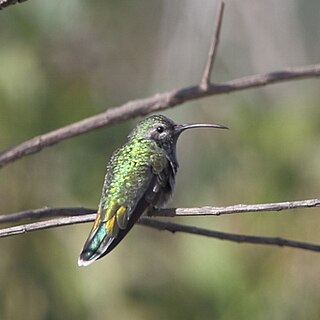
The white-tailed goldenthroat is a species of hummingbird in the subfamily Polytminae, the mangoes. It is found in Argentina, Bolivia, Brazil, Colombia, French Guiana, Guyana, Paraguay, Peru, Suriname, Trinidad and Tobago, and Venezuela.
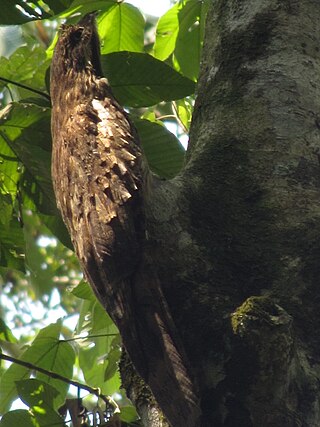
The long-tailed potoo is a species of bird in the family Nyctibiidae. It is found in every mainland South American country except Chile and Uruguay.
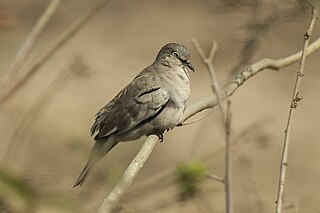
The Picui ground dove or Picui dove is a species of bird in the family Columbidae. It is found in Argentina, Bolivia, Brazil, Chile, Colombia, Paraguay, Peru, and Uruguay.

The violaceous quail-dove is a species of bird in the family Columbidae. It is found in Argentina, Bolivia, Brazil, Colombia, Costa Rica, Guyana, Nicaragua, Panama, Paraguay, Peru, Suriname, and Venezuela.

The tawny-headed swallow is a species of bird in the family Hirundinidae. It is monotypic within the genus Alopochelidon. It is found in Argentina, Bolivia, Brazil, Colombia, Falkland Islands, Paraguay, Peru, Uruguay, and Venezuela, where its natural habitats are dry savanna and subtropical or tropical seasonally wet or flooded lowland grassland.
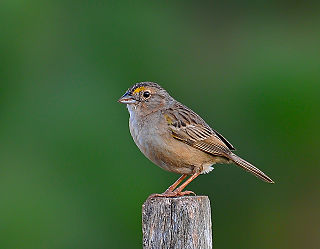
The grassland sparrow is a species of bird in the family Passerellidae. It is found in Argentina, Bolivia, Brazil, Colombia, French Guiana, Guyana, Paraguay, Peru, Suriname, Uruguay, and Venezuela. Its natural habitats are dry savannah, subtropical or tropical seasonally wet or flooded lowland grassland, and pastureland.

The freckle-breasted thornbird is a species of bird in the family Furnariidae. It is found in Argentina, Bolivia, Brazil, and Uruguay. Its natural habitats are subtropical or tropical moist lowland forest, subtropical or tropical dry shrubland, and subtropical or tropical moist shrubland. It was first described by Alcide d'Orbigny and Frédéric de Lafresnaye in 1838, from Uruguay.

The orange-headed tanager is a species of bird in the family Thraupidae. Native to South America, it is found in Argentina, Bolivia, Brazil, Colombia, Ecuador, Paraguay, Peru, and Venezuela, where it inhabits successional vegetation, cerrado, riparian forest, shrub, brush, and open woodland. Males of the species have sandy-gray upperparts, cinnamon to buff underparts, white on the center of the lower breast, belly, and tail, and rufous-orange and yellow heads. Females are similar but duller.
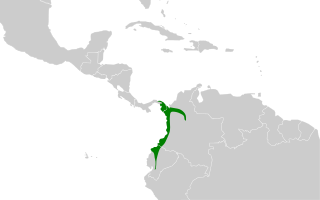
The stripe-throated wren is a species of bird in the family Troglodytidae. It is found in Colombia, Ecuador, and Panama.
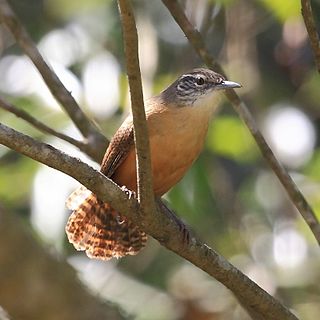
The buff-breasted wren is a species of bird in the family Troglodytidae. It is found in the Amazon Basin of northern Brazil and Amazonian Colombia, Ecuador, Peru and northern-border Bolivia, and also the Guianan countries of Guyana, Suriname, and French Guiana. It occurs in non-Amazonian regions of Venezuela and Colombia and its range extends into eastern Panama.

The long-billed wren is a species of bird in the family Troglodytidae. It is endemic to Brazil.

Cabanis's wren is a species of bird in the family Troglodytidae. It is found in Belize, Costa Rica, El Salvador, Guatemala, Honduras, Mexico, and Nicaragua.
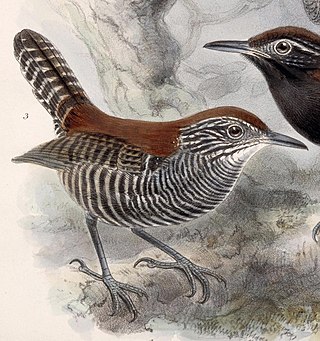
The riverside wren is a species of bird in the family Troglodytidae. It is found in Costa Rica and Panama.

The superciliated wren is a species of bird in the family Troglodytidae. It is found in Ecuador and Peru.

The stripe-breasted wren is a species of bird in the family Troglodytidae. It is found in Honduras, Nicaragua, Costa Rica, and Panama.

The canebrake wren is a species of bird in the family Troglodytidae. It is found in Costa Rica, Nicaragua, and Panama.























